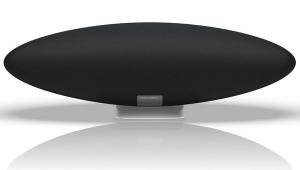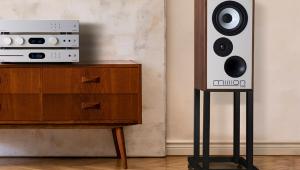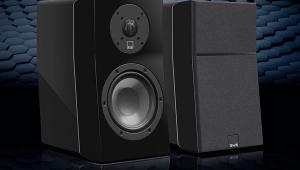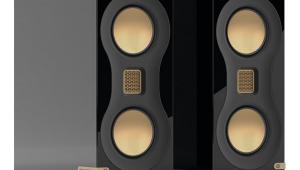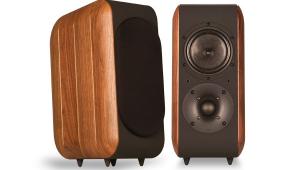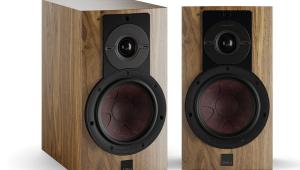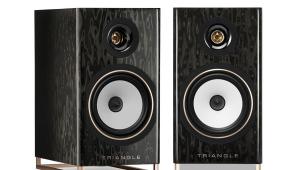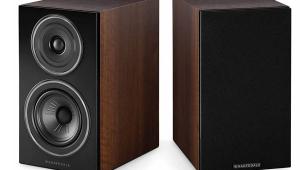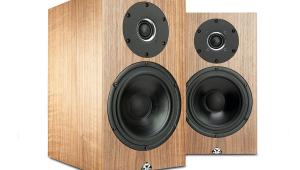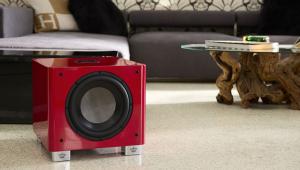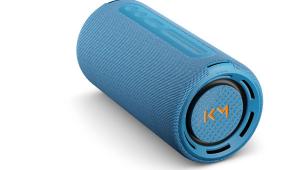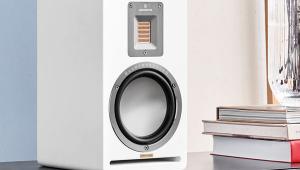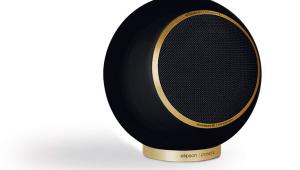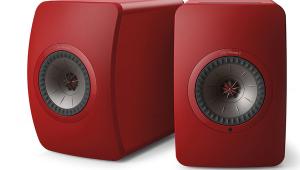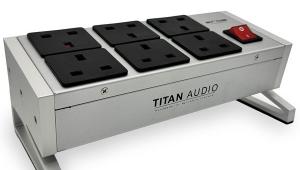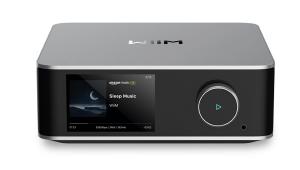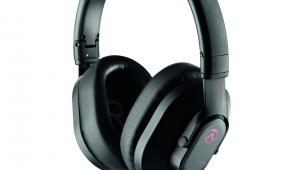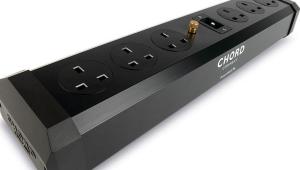Acoustic Energy, AE1 Active loudspeaker
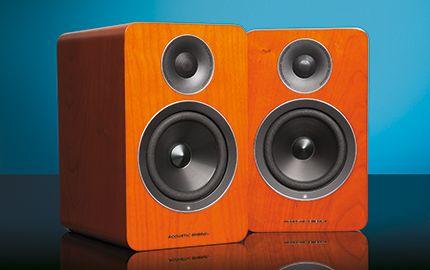
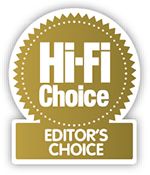 Having set up shop 30 years ago, the first speaker that Acoustic Energy made has gone on to become its most famous and enduring. The original AE1 was the little speaker that could. What it could do was largely defined by what the considerably older granddaddy of classy compact monitors, the BBC-designed LS3/5A, couldn’t. In other words, it excelled where the seductively mid-neutral old-timer was most obviously compromised – namely in its bass power and extension, loudness and dynamic range. As such, the upstart from the Cotswolds became a firm favourite with the pro audio sector and audiophiles that appreciated what was, at the time, a unique skill set.
Having set up shop 30 years ago, the first speaker that Acoustic Energy made has gone on to become its most famous and enduring. The original AE1 was the little speaker that could. What it could do was largely defined by what the considerably older granddaddy of classy compact monitors, the BBC-designed LS3/5A, couldn’t. In other words, it excelled where the seductively mid-neutral old-timer was most obviously compromised – namely in its bass power and extension, loudness and dynamic range. As such, the upstart from the Cotswolds became a firm favourite with the pro audio sector and audiophiles that appreciated what was, at the time, a unique skill set.
With its small anodised spun alloy cone bass unit, alloy dome tweeter and an enclosure that felt as if it had been hewn from stone, the AE1 was designed for hard driving and demanded muscular solid-state amplifiers. In fact, it became something of a litmus test for amps that thought they were hard enough. Some weren’t. But in short, what the LS3/5A was to speech, modest ensembles and small-scale classical music, the AE1 was to flat-out stadium rock. That it was also exceptionally articulate, beautifully voiced and could image in 3D only boosted its reputation.
Naturally, it has evolved over the decades. The mildly revised MkII version – essentially the MkI without the utilitarian finish – didn’t move the game on much. But the design of the third-generation model did, easing out the cabinet size and replacing the twin tube-style front-firing reflex ports with a single, larger rear port. Build went from sturdy to uncompromising with steel cladding on the internal walls, steel cross bracing and an aluminium billet dressing for the baffle. Also new were the 125mm anodised alloy mid/bass driver with a ‘curvilinear’ variable-thickness cone and a fabric ring dome tweeter. It was a fusion of brute force and functional beauty and, up to that point, the most advanced speaker to wear the AE1 badge. The AE1 Classic followed – HFC 371 – (a lightly made-over re-issue of the original) and the AE1 Classic LE, sporting a more luxurious finish. But it didn’t mean the AE1 was finished.
It’s the apex third-gen model that mostly informs the design of the latest AE1. The big difference is that its passive legacy has been handed on to the company’s new Reference 1 standmount while the speaker that started it all for Acoustic Energy is now the fully fledged, self-powered AE1 Active you see here. It’s surprising it’s taken the AE1 so long to go active given the pro sector’s penchant for monitors that can be driven directly from the desk, but it seems Acoustic Energy could no longer ignore the sea change happening in the domestic audio market and the emerging popularity of DACs incorporating high-quality preamps that make them ideal, space efficient, partners for a pair of fully active speakers.
Acoustic Energy already has some experience in the self-powered field with its Aego sub/sat system, but the AE1 Active adheres to the classic analogue implementation – a two-way standmount toting 2x 50+50W of built-in Class AB amplification and a fully active dividing network. Drawing on AE’s considerable experience with metal drivers, the Active teams the company’s 125mm ‘pure piston ceramic’ aluminium coned mid-bass drive unit with a slightly larger than normal 27mm aluminium dome tweeter seated in a Wide Dispersion Technology (WDT) waveguide. The claim for this is that it helps the tweeter interact more successfully with the room it’s in, the upshot being that more of the speaker’s output reaches the listener directly rather than being reflected off other surfaces, increasing efficiency and reducing distortion.
On the rear panel, in addition to the mains power socket and on/off switch, there are controls to adjust bass and treble by +/-2dB as well as volume level, and both RCA and balanced XLR inputs for hooking up with a preamp or source direct. With the exception of the conspicuously lavish £2,000 AE1 MkIII, (HFC 337) the Active looks and feels comfortably the most up-market of the AE1 line, especially the optional cherry veneer piano lacquer finish as supplied, for which you pay a £200 premium over the £1,000 asked for the standard white or black piano lacquer finishes.
Sound quality
The matching ‘Reference’ stands can be purchased as part of a package for an additional £200 (£350 when purchased separately), and like the speakers themselves, look great and, while not particularly massy, provide a firm and stable foundation. I go for balanced connections between the speakers and my ATC CA2 preamp (HFC 397), using 3m runs of Nordost Red Dawn XLR interconnect. As I’m still into buying and listening to CDs, it’s a Cyrus CD Xt Signature transport and Chord Hugo (both reviewed in HFC 386) up front communicating via a Nordost Valhalla 2 digital interconnect and with the preamp via RCA Nordost Red Dawn interconnects.
What is it about a well-executed active speaker? Recording studios love them, every speaker designer I’ve ever met has said that, given a free hand, it’s the way they’d go. And yet the domestic audiophile market still shows an extreme reticence. Maybe it cuts across that deeply ingrained need to chop and change, to upgrade. Forever eyeing up that bigger, shinier amp is an abiding ‘weakness’ most of us would admit to.
Perhaps it’s because in a quick A-B demo against a prescriptively voiced passive design, the active alternative is unlikely to impress. The usual roster of attention-grabbers won’t be pressing the usual get-a-load-of-this buttons: the sparkly treble, the pushed, hyper-detailed midrange, the bombastic bass. But spend some time with a good active box and the penny will surely drop. There’s a difference between benign artifice and low distortion, low colouration, phase coherent sound and, in the long run, it’s the latter that’s more rewarding and easier to listen to.
The AE1 Active is persuasive. No hype or exaggeration here, just a natural sense of power, pace and perspective. Essentially, the sound is dynamic, tactile, tightly focused and creates a stereo arc that effortlessly ghosts through the walls of my larger listening room. More than that, though, is the way everything has order, solidity, a specificity of image and beautifully balanced tonality. It may be a little short of an epiphany, but the way even the overwrought, multi-layered hell of Whitney Houston’s Run To You – a brutally challenging test track variously just squeaked into intelligibility or mercilessly mangled by some passive speakers of my acquaintance over the years – simply falls into place and sounds as sumptuously gorgeous as producer David Foster presumably intended is deeply satisfying. Even if you’re not a Whitney fan, the ‘hell’ bit simply evaporates.
This small speaker’s bass deserves special mention, too. It’s smooth – no lumpiness at all – and it goes surprisingly low. It not only integrates seamlessly, but delivers its controlled extension with energy and drive and none of the forced-sounding compression that can afflict small passive boxes tuned to over achieve. Nathan East’s double bass duetting with pianist Bob James on their The New Cool album sounds lucid, easy and properly expressive, the AE1 Active delivering a fine sense of the instrument’s body but also revealing nuances of technique other compact standmounts too often fumble.
Conclusion
In fact, it’s hard to think of any other comparably priced standmount that images with such solidity or resolves voice, instrument timbre and ambient information more naturally. It’s this tonal accuracy, transparency and talent for capturing subtle ambient cues, rather than an obvious display of sonic fireworks, that differentiates it from its passive loudspeaker rivals and makes it such good company over a listening session. DV
DETAILS
Product: Acoustic Energy AE1 Active
Price: £1,000
Origin: UK/China
Type: 2-way active standmount loudspeaker
Weight: 6.8kg
Dimensions: (WxHxD) 185 x 300 x 250mm
FEATURES
● Quoted power output: 2x 50+50W from Class AB amps
● 1x 27mm aluminium dome tweeter with
● WDT waveguide
● 1x 125mm aluminium cone mid/bass driver
● 42Hz – 28kHz frequency range
Distributor: Acoustic Energy Ltd
Telephone: 01285 654432
Website: acoustic-energy.co.uk
 Read the full In-depth review in issue 422
Read the full In-depth review in issue 422
 |
Inside this month's issue:
Ruark R610 music system and Sabre-R standmount speakers, PMC twenty.23i Active, floorstanders, English Acoustics Downton preamplifier, Bluesound NODE ICON preamp/streamer, Ortofon Concorde Music Blue MM cartridge and much, much more
|
